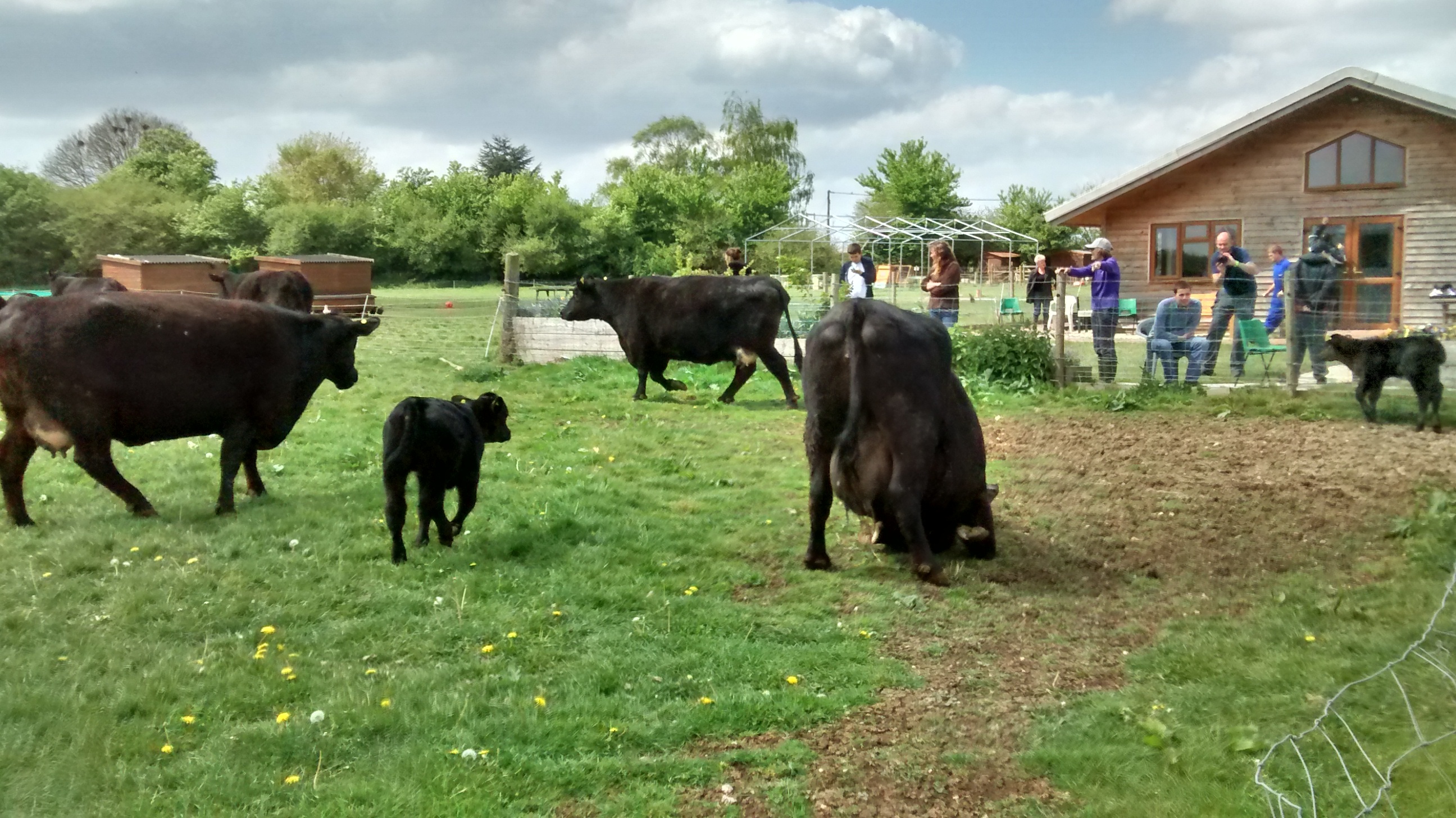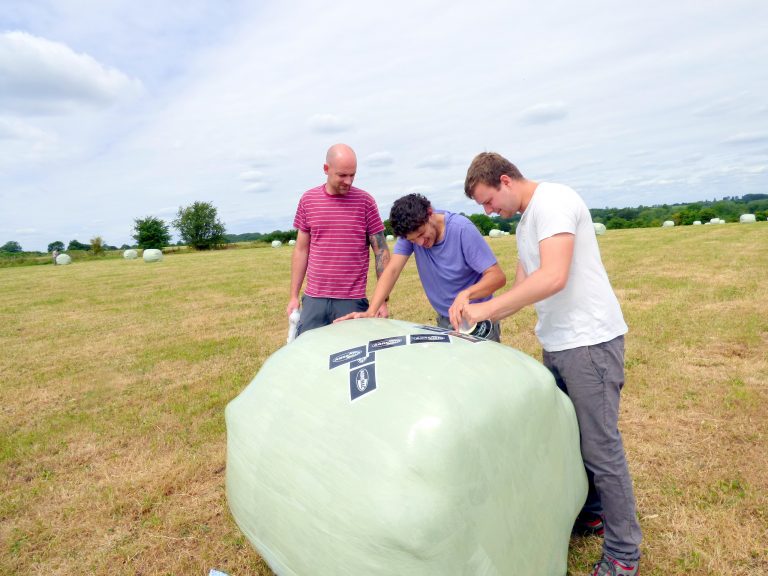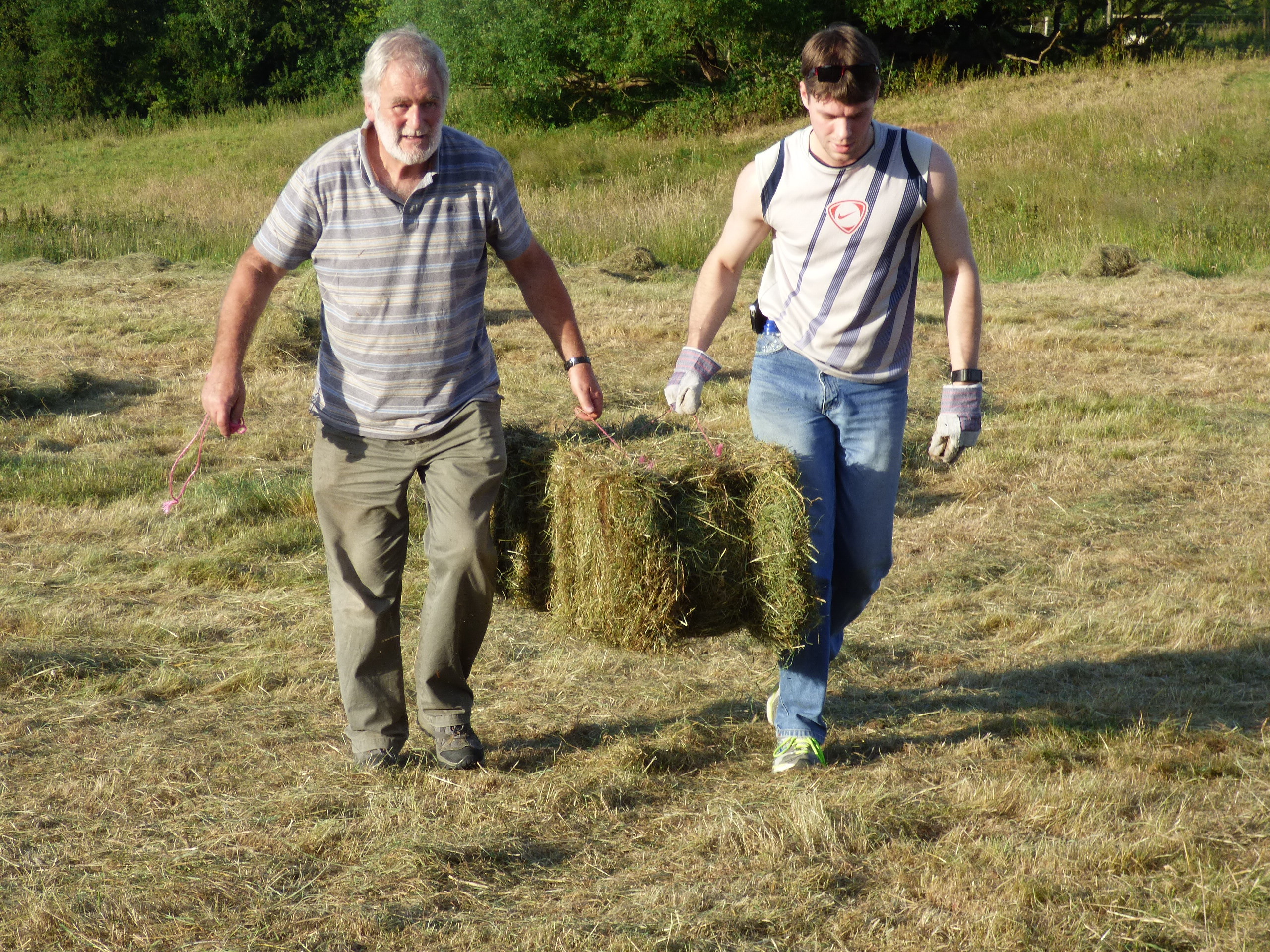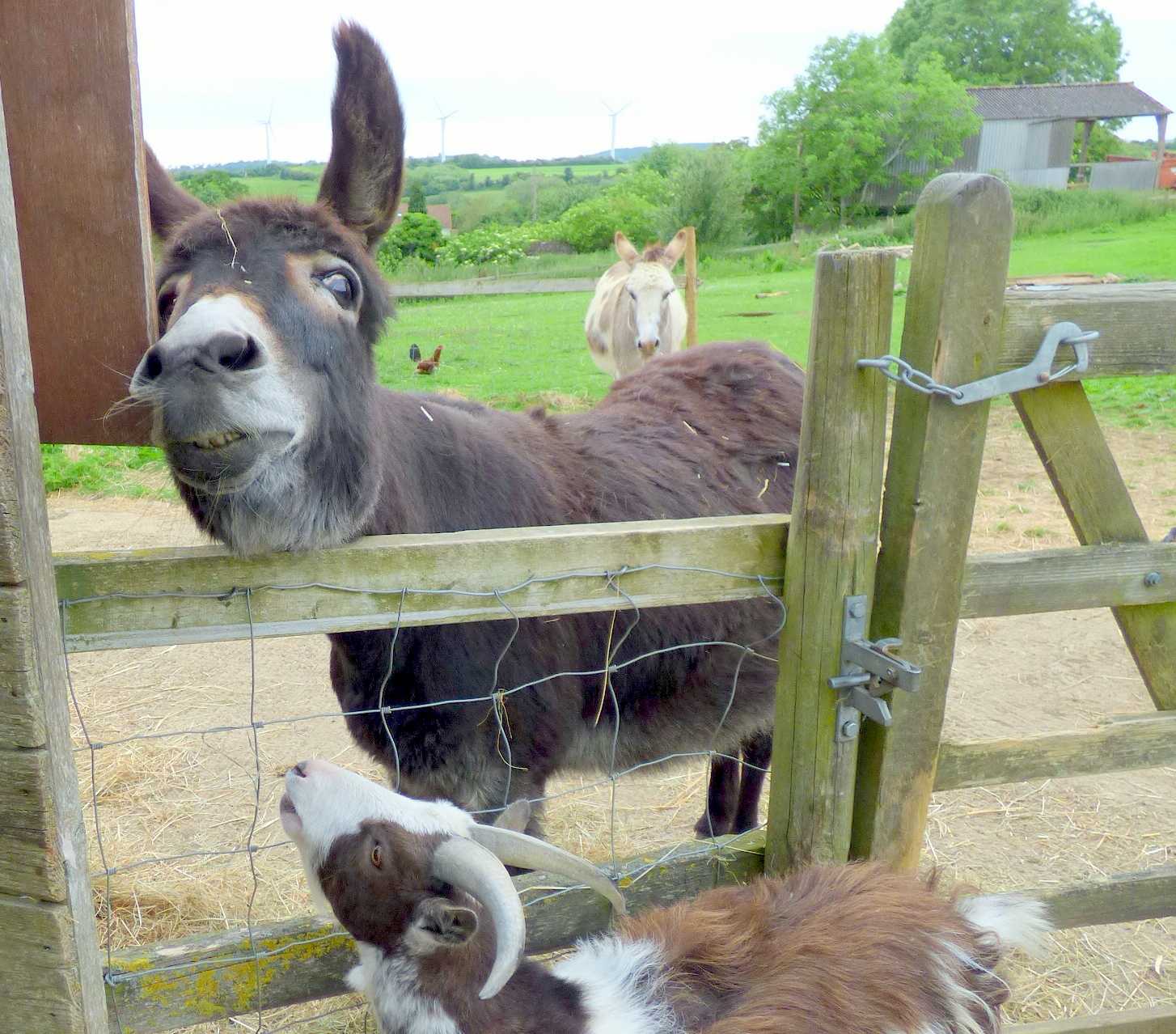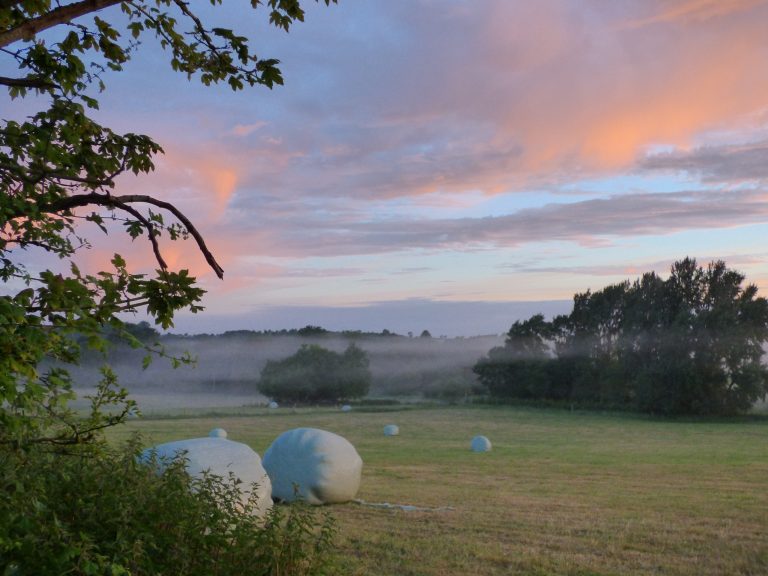
About the Farm
At the heart of Pennyhooks is a 100 acre organic grass land farm. It has been owned by the Otter Family for over 60 years. It has beautiful views and water meadows with orchids, otters, water voles and a wonderful meandering brook within a lovely valley. There is a herd of about 20 Aberdeen Angus cows plus their calves, as well as a flock of hens, some donkeys, goats and pigs. The cows have an important role in the care of the conservation on the farm, as by their carefully managed grazing, the species rich grassland is maintained.
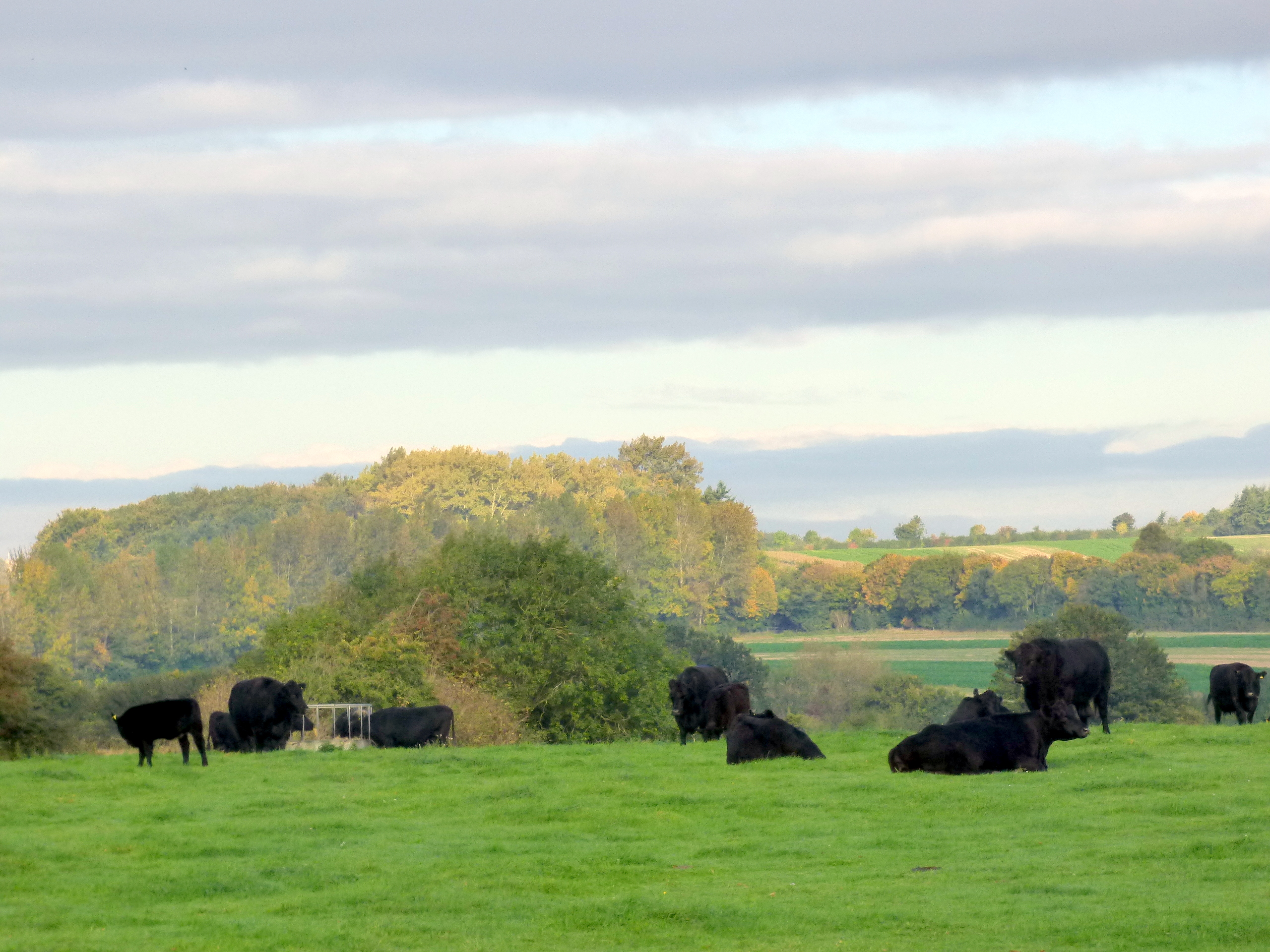
Conservation & Archaeology
Pennyhooks’ ancient valley is protected as a county wildlife site and currently by being part of the Natural England Higher Level Stewardship programme. Neolithic flints have been found here, as well as old field systems, and it also has a limestone tufa spring within a reed bed in the semi-ancient little woodland.
It needs constant care and attention to ensure that the significance of this special farm is maintained and if possible enhanced for the wellbeing of future bio-diversity here. The sense of wellbeing and a balanced ecology also often benefits those who spend time here. Recent research supports the perception that being outside in a natural environment has positive effects for mental and physical health.
See the Social Farms and Gardens website for further info.
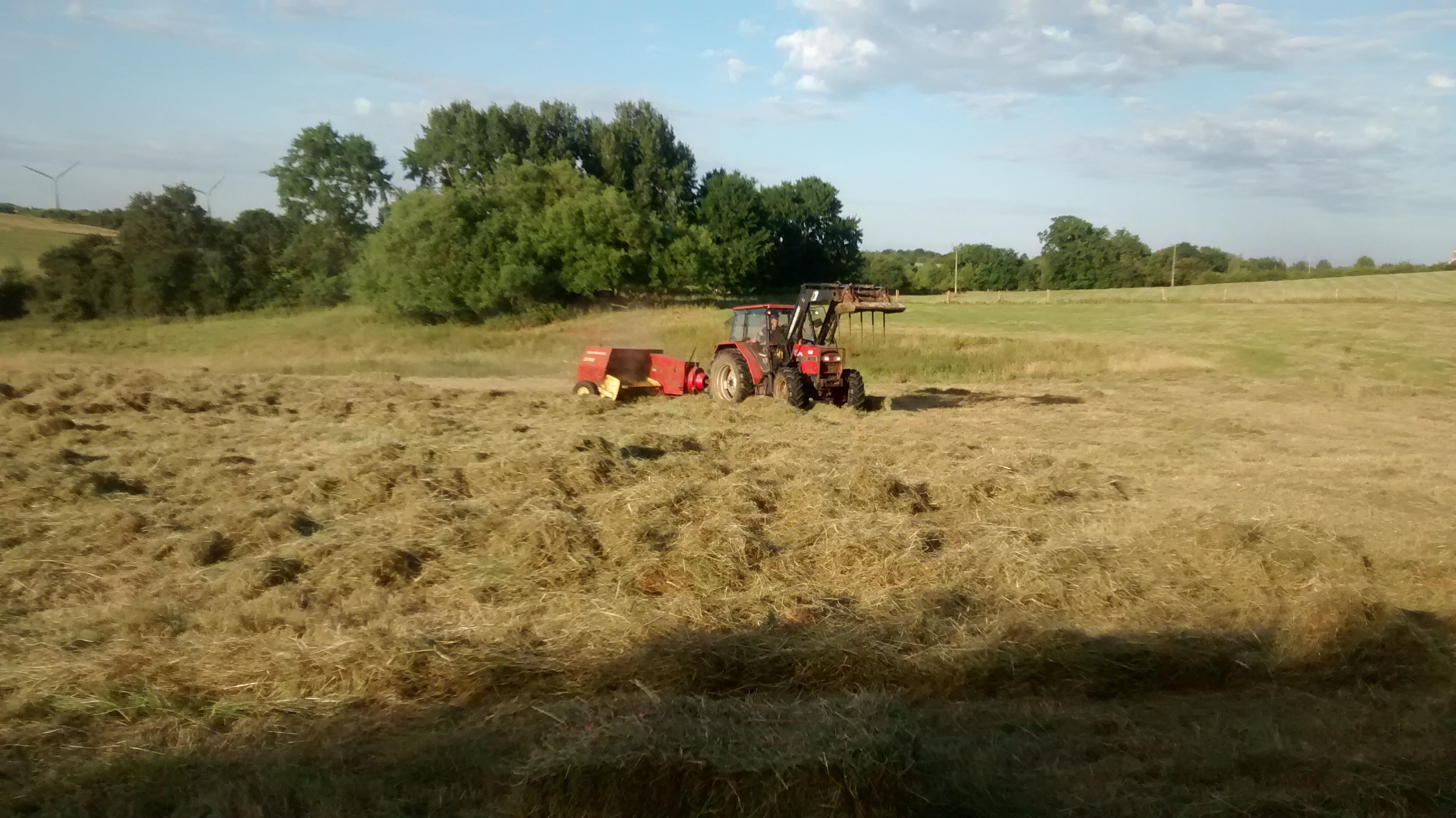
Farm accreditation
Pennyhooks is a Soil Association organically registered farm (Reg no. G2623). It also has Red Tractor status and sells its eggs and meat under these accreditations.
Farm Year
Pennyhooks Farm Year revolves around care of its cattle and care of its grassland. Calves are born throughout the year, suckled on their mothers for 9 months, and sold between 1 and 2 years old either as store cattle or finished cattle. We have our own pedigree Angus bull.
Activities outside on the farm include:
- January – Thistling, using hand/foot diggers to remove weeds like thistles from the grassland.
- January to February - Harvesting of our own, specially planted, weaving willow. We use the supple green wands to make plant supports for our Plant Sale and for our gardens.
- January to April - Fencing, ongoing checking and repairs to be ready for the cows to be turned out again.
- February - Muck spreading, using contractors and their machines to return natural nutrients to the soil.
- February onwards - Laying woodchip on the paths through Little Wood, to keep a way open for people to enjoy their walks.
- March – Hedging , with the help of experienced craftsmen to maintain our woodland and hedges by appropriate trimming, laying and weeding.
- March - Checking the fields for any stones or rubbish before the grass grows, that might damage mowing machines or be eaten by the cows.
- March – Training the donkeys to be ready for their Palm Sunday Procession in Shrivenham.
- April to early May - Turning out the cows over 3 weeks, carefully managed to keep them well. We all enjoy watching them run and jump when they are first let out!
- May and June- Moving the cows at grass during - the students help in putting out the electric fences to protect the growing grass and special wild flowers.
- June - Silage making - local contractors help to turn grass into silage bales for Winter feed. Sometimes we have to patch the bales to keep them from spoiling,( after the crows have made holes by using them as tables to stand on and pluck corn from the ear, from the ears they have picked in our neighbour’s fields!).
- June and July - Raking off the toppings on the meadows in - we top the creeping thistle and reeds with the tractor. The toppings would put too much nitrogen back and prevent the wild flowers from growing so the students help to rake it off.
- July - Hay making, using our own old fashioned machinery to lessen the compaction on the water meadows, and the students help by raking up any hay that the machines have left. We make about 200 small bales of sweet smelling meadow hay to feed the donkeys, goats, pigs and any cows in special need. Making hay is a recognised way of helping to maintain and enhance the meadow flower species, by spreading the seed further afield. We spend a lot of time in the meadows monitoring the numbers of species of flower and insect and also will cut and spread extra areas with our own flowers once they have set seed.
- August, September, October - Harvesting - we buy our straw locally as our farm is not suitable to make our own; we watch the giant combines all around us with pleasure knowing that corn is coming in safely for another year. Our own harvesting is done in our hedgerows, creating a wealth of tastes to enjoy at our Harvest Meal in October, such as blackberries, bullace, crab apples, elderberries and sloes. We also harvest and prepare fruit and vegetables from our own gardens to share too, such as runner beans, tomatoes, potatoes, sweet corn, and beetroot.
- October – the cows start to need shelter again and we begin to fill the yards with straw and make final repairs to the sheds and Yards to be ready for Winter time.
- November to March - Pollarding and stacking of logs - it is time to care for the trees especially the willows; we have 35 ancient trees by the brook, that need regular pollarding by a tree surgeon. We help by stacking the logs, some as habitat piles and some to burn to help keep us warm in winter.
- November to April - Winter Care of the Cows & other animals - they need help with cold, wet weather , by cleaning, bedding up with fresh straw and feeding with hay and silage each day, jobs shared out with the students. Other Cattle Jobs include calving, tagging, dosing and testing the cattle annually for TB.
- December – Keeping the donkeys specially clean to be part of the Christmas celebrations.
- All year round - Ongoing care & tidying for the donkeys, hens, goats and pigs everyone shares in the cleaning feeding and general care for the well being of all our animals.
